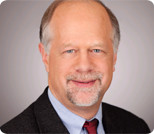The German Miracle: Another Look
Earlier this summer George Soros and some leading Keynesian economists criticized what they regarded as Germany’s overly strict fiscal discipline. Yet Germany’s real output expanded at a robust 9% annual rate in the second quarter, while the U.S. economy grew at an anemic 1.6% rate. So is Germany now a role model for how to recover?
In a June op-ed, German Finance Minister Wolfgang Schäuble justified his government’s decision to cut spending, citing “aversion to deficits and inflationary fears, which have their roots in German history in the past century.” He was presumably making a reference to the destructive hyperinflation of the 1920s.
Yet Mr. Schäuble might have cited another relevant episode from his nation’s history. Sixty-two years ago Germany became a role model for recovery from a very different crisis. In the aftermath of World War II, Germany’s cities, factories and railroads lay in ruins. Severe shortages of food, fuel, water and housing posed challenges to sheer survival.
Unfortunately, occupation policy makers actually perpetuated the shortages by retaining the price controls the Nazi government had imposed before and during the war. Consumers and businessmen battled against the bureaucratic regime of controls and rationing in what the German economist Ludwig Erhard described as Der Papierkrieg—the paper war. Black markets were pervasive.
Germany’s new Social Democratic Party wanted to continue the controls and rationing, and some American advisers agreed, particularly John Kenneth Galbraith. Galbraith, an official of the U.S. State Department overseeing economic policy for occupied Germany and Japan, had been the U.S. price-control czar from 1941-1943; he completely dismissed the idea of reviving the German economy through decontrol.
Fortunately for ordinary Germans, Erhard—who became director of the economic administration for the U.K.-U.S. occupation Bizone in April 1948—thought otherwise. A currency reform that he helped to design was slated to replace the feeble old Reichsmark with the new Deutsche mark in all three Western zones on June 20. Without approval from the Allied military command, Erhard used the occasion to issue a sweeping decree abolishing most of the price controls and rationing directives. He later told friends that the American commander, Gen. Lucius Clay, phoned him when he heard about the decree and said: “Professor Erhard, my advisers tell me that you are making a big mistake.” Erhard replied, “So my advisers also tell me.”
It was not a big mistake. In the following weeks Erhard removed most of the Bizone’s remaining price controls, wage controls, allocation edicts and rationing directives. The effects of decontrol were dramatic.
The shortages ended, black markets disappeared, and Germany’s recovery began. Buying and selling with Deutsche marks replaced barter. Observers remarked that almost overnight the factories began to belch smoke, delivery trucks crowded the streets, and the noise of construction crews clattered throughout the cities.
The remarkable success of the reforms made them irreversible. A few months later the French zone followed suit. The Allied authorities went on to lower tax rates substantially.
Between June and December of 1948, industrial production in the three Western zones increased by an astounding 50%. In May 1949 the three zones were merged to form the Federal Republic of Germany, commonly called West Germany, while East Germany remained under Soviet domination as the German Democratic Republic.
Growth continued under the market-friendly policies of the new West German government. Erhard became the Minister of Economic Affairs, serving under Chancellor Konrad Adenauer from 1949 to 1963. The West German economy not only left East Germany’s in the dust, it outgrew France’s and the United Kingdom’s despite receiving much less Marshall Plan aid. This was the era of the Wirtschaftswunder or “economic miracle.”
Between 1950 and 1960 the West German economy’s real output more than doubled, growing for a decade at a compound annual rate of nearly 8% per year. Econometricians who have tried to parse the various factors contributing to this remarkable record found that not all of it can be attributed to a growing labor force and investment flows, or to “catching up” from a low initial level of output. A large chunk of the period’s growth is explained by superior economic policy.
Erhard succeeded Adenauer in 1963 and served as chancellor for three years. His electoral success was an endorsement of the policies that had unleashed the Wirtschaftswunder.
Erhard drew his ideas from free-market economists centered at the University of Freiburg, particularly Walter Eucken, who developed a classical liberal philosophy known as Ordoliberalism (named after ORDO, the academic journal where the economists published their ideas). Interest in Ordoliberal ideas waned in Germany after 1963, eclipsed by interest in Keynesian economics. The welfare state grew. The economy became clogged with interest-group policies. Not coincidentally, economic growth also waned. From 1960 to 1973 growth was about half as great as it had been in the 1950s, and during the period from 1973 to 1989 it was halved again to only 2% per year.
Interest in Ordoliberalism began to revive among academics in the 1970s and 1980s, and it continues to have an institutional presence in Freiburg at the university and at the Walter Eucken Institute. Greater interest among politicians might be the best thing for reviving German economic growth over the long term.
If Mr. Schäuble is sincere when he says that, by comparison with U.S. policy makers, “we take the longer view and are, therefore, more preoccupied with the implications of excessive deficits and the dangers of high inflation,” he can find a useful model in the policies of his predecessor 60 years ago.
Mr. White is professor of economics at George Mason University. This op-ed draws on his forthcoming book, “The Clash of Economic Ideas.”
This article was originally posted in the Wall Street Journal.
Image by renjith krishnan / FreeDigitalPhotos.net.









